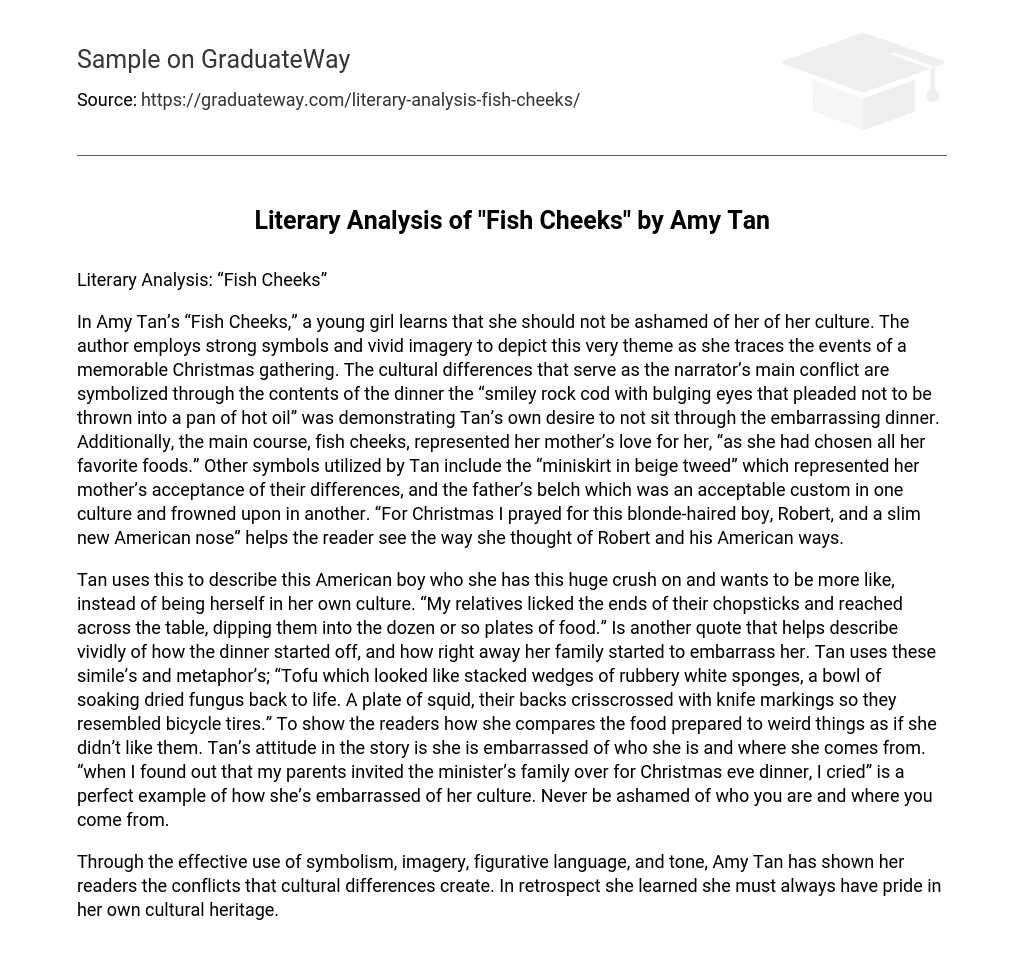Literary Analysis: “Fish Cheeks”
Amy Tan’s “Fish Cheeks” depicts a young girl’s realization that she should embrace her culture without shame. Through the use of powerful symbols and vivid imagery, the author explores this theme by recounting a memorable Christmas gathering. The cultural differences, which act as the main conflict for the narrator, are symbolized through the dinner. The “smiley rock cod with bulging eyes that pleaded not to be thrown into a pan of hot oil” represents Tan’s desire to avoid the embarrassing meal. Furthermore, the fish cheeks, chosen by her mother as her favorite food, symbolize her mother’s love. Tan also employs symbols such as the “beige tweed miniskirt,” which signifies her mother’s acceptance of their differences, and the father’s belch, considered acceptable in one culture but not in another. The phrase “For Christmas I prayed for this blonde-haired boy, Robert, and a slim new American nose” reveals the narrator’s perception of Robert and his American lifestyle.
In this passage, Tan discusses a crush she has on an American boy and her desire to be more like him, forsaking her own cultural identity. Another quote that vividly depicts the start of a dinner and her family’s embarrassing behavior is, “My relatives licked the ends of their chopsticks and reached across the table, dipping them into the dozen or so plates of food.” Tan employs similes and metaphors, such as comparing tofu to “stacked wedges of rubbery white sponges” and squid to backs “crisscrossed with knife markings so they resembled bicycle tires,” to illustrate her aversion to the food being served. Throughout the story, Tan exhibits an attitude of embarrassment towards her own heritage and background, as seen when she tearfully reacts to her parents inviting the minister’s family for Christmas Eve dinner. The overarching message is to never feel ashamed of one’s true identity and origins.
By utilizing symbolism, imagery, figurative language, and tone, Amy Tan demonstrates to her readers the conflicts arising from cultural differences, ultimately recognizing the importance of embracing one’s own cultural heritage.





